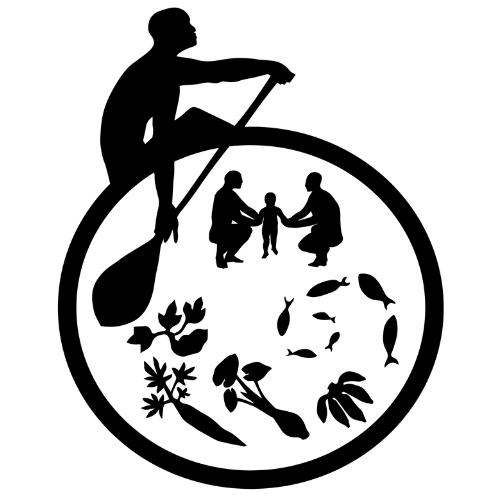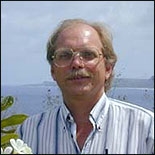 As I look across the jurisdictions, I am amazed at the diversity of ideas and activities that are being utilized to support our common goals. Interventions are in full swing in all of our communities (except the FAS). It is rewarding to see both partnering with existing programs, like master gardeners, community markets and traditional Extension programs, as well as completely new efforts like the social marketing initiatives and development of role models. As one reads this newsletter it is impossible not to be impressed with the innovation, enthusiasm and energy of all the CHL teams across our jurisdictions. Also, just to let you know, we are beginning to search for potential funding sources and partnerships to sustain these efforts into the years beyond CHL.
As I look across the jurisdictions, I am amazed at the diversity of ideas and activities that are being utilized to support our common goals. Interventions are in full swing in all of our communities (except the FAS). It is rewarding to see both partnering with existing programs, like master gardeners, community markets and traditional Extension programs, as well as completely new efforts like the social marketing initiatives and development of role models. As one reads this newsletter it is impossible not to be impressed with the innovation, enthusiasm and energy of all the CHL teams across our jurisdictions. Also, just to let you know, we are beginning to search for potential funding sources and partnerships to sustain these efforts into the years beyond CHL.Bob Barber, PhD,
Guam Co-PI, Children’s Healthy Living Program (CHL)
From the Editor
We love to talk about our fabulous employees and students. In this issue we want to introduce you to Jeannie Butel, CHL’s Intervention Leader, and Julianne Power, CHL Alaska Project Manager. As you can see from their profiles, they are engaging in the very same CHL activities that we are promoting for children in our region.
Also, some of our students just got back from the annual Experimental Biology Conference. It was an eye opener for them and that is one of the outcomes of CHL’s education work – more informed scientists in the region. Here are Lenora Matanane’s and Tanisha Aflague’s post conference write-ups. Both of these budding scientists are from Guam.
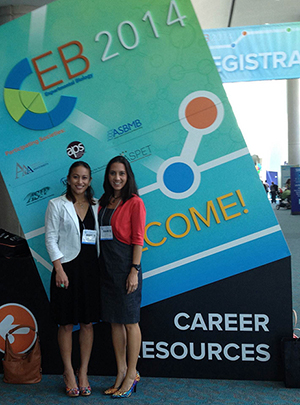
Lenora Matanane submitted her abstract titled, “The influence of community food environment on weight status of young children participating in the Children’s Healthy Living (CHL) Program in Guam”, which was accepted for poster presentation at the Experimental Biology 2014 conference in San Diego, CA. Additionally, it was selected as one of the top 8 poster abstracts for the Community and Public Health Nutrition (CPHN) Research Interest Section (RIS), and Lenora was invited to participate in the CPHN poster competition at EB, where she was awarded 3rd place. Throughout EB, she attended various presentations with Tanisha and met other students and professionals with similar and overlapping research interests. It was truly an invaluable first big conference presentation experience that she hopes will not be the last.
Tanisha Aflague’s abstract “Adaptation and evaluation of the WillTry tool to assess willingness to try fruits and vegetables among children 3-11y in Guam” was accepted for oral presentation at the 2014 Experimental Biology conference in San Diego, CA. Her presentation was part of the American Society of Nutrition’s Community Public Health Nutrition Research Interest Section’s topic category Health Disparities and Promoting Health in Diverse Populations. She shares that presentation went well and that having members of the CHL family and fellow UHM students in attendance showing their support was comforting.
Alaska
CHL Team Alaska
The Alaska CHL team is taking advantage of an early spring to promote gardening at preschools. With UAF Cooperative Extension as a partner, the CHL team organized a Preschool Gardening Workshop to introduce educators to different types of gardening and special considerations for gardening with children. Twenty-six educators attended the workshop, representing 14 different preschools or day cares in the Fairbanks area. Local nurseries donated supplies, such as seed starter trays, work gloves, and seed packets to distribute at the workshop. Darcy Etcheverry, the Agriculture Program Assistant, ran the workshop, which received very positive feedback. We intend to follow-up with the attendees and support their efforts to start gardening! We hope that the success of this workshop will encourage Cooperative Extension to offer it again next year.
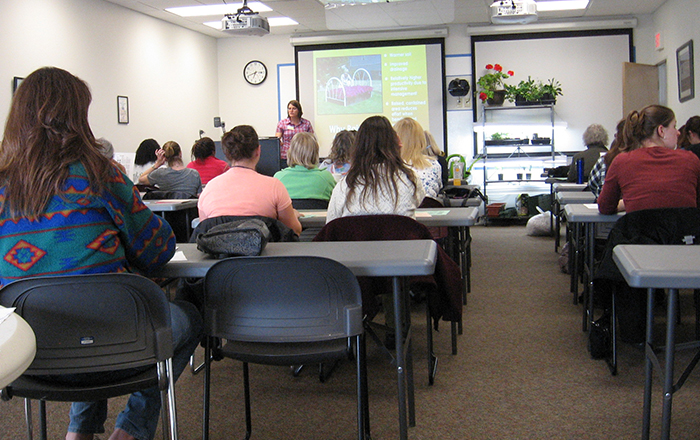
The Alaska CHL team is also working with Master Gardener volunteers to deliver garden education to preschoolers. Fairbanks Native Association (FNA) Head Start invited the volunteers into two classes, of about 30 children to hold a fruit and vegetable touch and taste test with the children to familiarize them with the look, feel, and taste of whole, raw food.. First, children had to reach into a pillow case and guess what fruit or vegetable was within. Then, after the mystery food was revealed, children were encouraged to taste samples of the food. FNA Head Start has invited the volunteers to return to four additional classes to do the same activity.

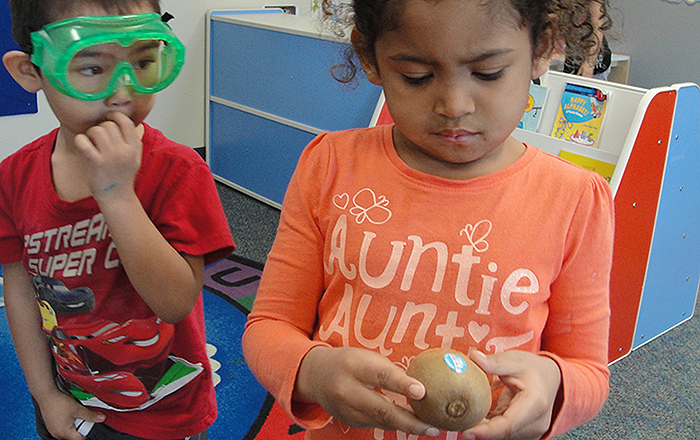

In February, the Alaska CHL team worked with two community members and THREAD to deliver a two-part Physical Activity and Nutrition training for early childhood educators. The first session focused on nutrition and physical activity ideas for the classroom, while the second session focused on MyPlate and Alaska traditional foods. Thirteen educators attended the first session, representing 8 different preschools or day cares in the Fairbanks area. Eight returned for the second session. The workshops promoted the 6 CHL behaviors and were great opportunities to facilitate discussion amongst the educators about barriers and their unique strengths to promote child healthy weight. As a continuation of this training, the Alaska CHL team worked with Thrivalaska Head Start to deliver training for parents that focused on family meals, smart shopping, and MyPlate.
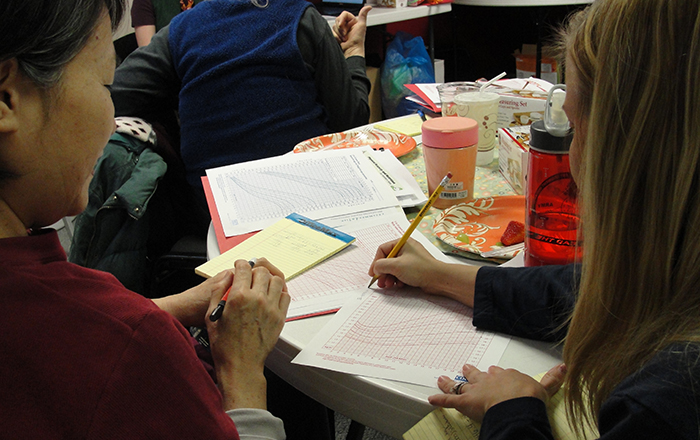

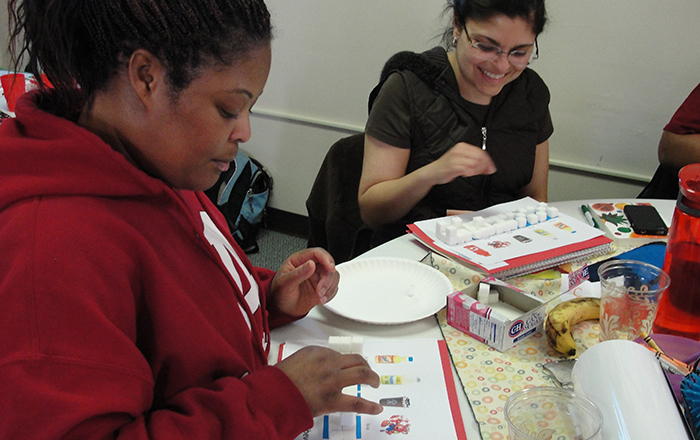
American Samoa
CHL Team American Samoa
The American Samoa intervention team was very active during the months of March and April as they worked with public and private ECE (Early Childhood Education aka Head Start) schools. Ian Gurr, the Horticulturist at American Samoa Community College (ASCC) and Tunai Alfred Peters, the Agriculture Extension Program Manager at ASCC have been actively supporting the CHL team with its community gardening projects. Vegetable gardens and hydroponic systems were established at one Third Grade class at Alofau Village Elementary School and in all four ECE schools in the paired intervention villages of Leloaloa/Aua and Faga’itua/Masefau. Vegetables such as bok choy (Chinese cabbage), eggplant, laupele (edible hibiscus), sweet potatoes, and tomatoes were planted in the newly established school gardens. Bok choy, several varieties of open leaf lettuce, basil, and mint are now growing in each of the hydroponic systems. Ian Gurr and the ASCC Community & Natural Resources Agriculture Extension team did a wonderful job involving the many children, teachers, janitors, administrators, and parents as they demonstrated the proper way to maintain and care for each growing system.

The harvest for most of the vegetables and herbs will begin as soon as three weeks and extend over the next few months. Laupele, a native to the Pacific Islands, is a perennial vegetable that flourishes in the Samoan climate. It can be harvested on a continual basis by picking leaves off of the stems whenever desired for cooking. It is grown through vegetative propagation whereby branches can be cut and placed into new ground to start a new plant. The ease of growing laupele and its highly nutritious qualities make it an ideal food plant for households to grow in American Samoa, where other options for getting nutritious fresh green vegetables are limited. Laupele is higher in fiber, protein and some vitamins and minerals such as vitamin A, calcium, and iron than bok choy, the other main green vegetable grown in American Samoa. Sweet potatoes were chosen to promote as they grow well in American Samoa, and because both their tubers and leaves are edible. The leaves are especially nutritious. Many of the schools are planning to use the produce in their school lunch programs, as well as provide fresh produce for the children to take home to their ‘aiga (families). The Parent Teacher Associations (PTA) at each school are supporting this project by providing security, weed control, maintenance, and garden tools. In addition, many of the teachers and parents have been encouraged to start their own vegetable gardens at home as well as with various youth groups with whom they are associated. It is our hope that this initiative will be sustained and multiply, sparking increased desire among children to eat and enjoy the vegetables that they have personally become involved in growing.
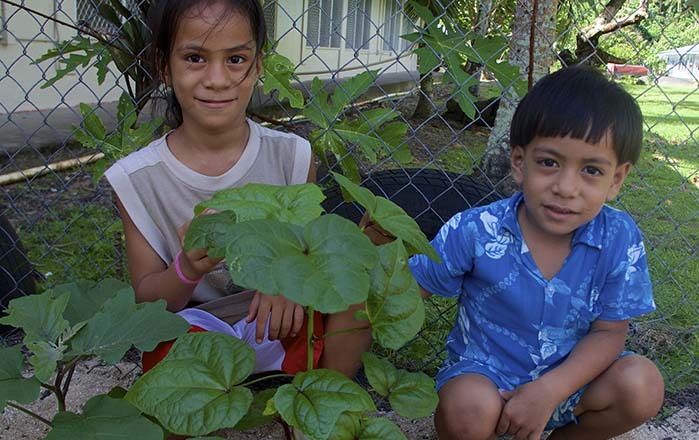
Commonwealth of the Northern Mariana Islands
CHL Team Commonwealth of the Northern Mariana Islands
The CHL program in the Northern Marianas Islands recently launched its social marketing initiatives which involve highly targeted activities that promote key health messages at two areas on Saipan. The initiatives include the placement of several roadside signboards at strategic locations in the villages of Tanapan, Achugao, San Roque, As Matuis, and Kagman. The catchy signboards have caught the attention of community members, including a daily newspaper, which placed a photo of the signboard on the front page. The content on the signboards will be replaced every month to focus on a key CHL messages.
The social marketing activities also included the launch of the “Healthy Village Stores” initiative that identifies role models in the community to work with village stores (known as corner stores or convenience stores on the U.S. mainland) better market and sell healthy items. Already, the CHL team has met with these role models, who are prominent residents of the target villages, to provide them with training and other tools they need as they engage village storeowners. The CHL team also developed a “Healthy Village Store Checklist” that itemizes a range of options that store owners can implement, many of which will not involve any additional expenses. The checklist includes the relocation of fruits and vegetables in the front of the store, the placement of water in lower level refrigerator shelves so children can see them, implementing a healthy living club loyalty program, point of sale promotions, attaching recipe cards to grocery shelves, and weekly in-store activities like having role models serve as “celebrity baggers” and allowing shoppers to have their blood pressure measured by volunteer nursing students.
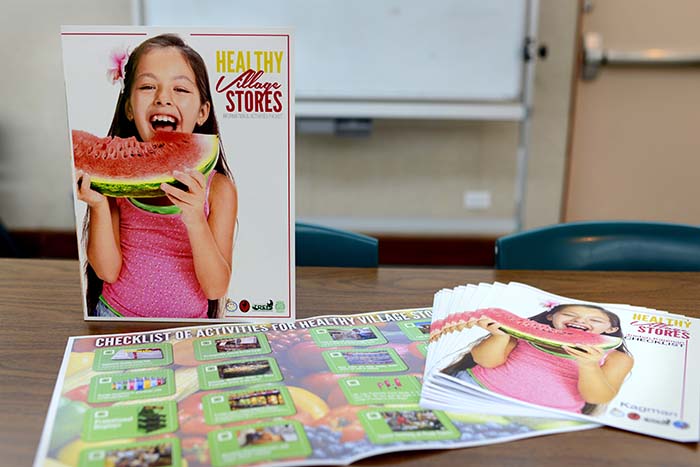
The CNMI CHL Team would like to acknowledge Mr. Frankie M. Eliptico, External Relations Director for the Northern Marianas College, along with his marketing team for creating a comprehensive social marketing campaign in collaboration with CHL and CHL role models that has captured the attention of many residents within the two intervention sites.
Freely Associated States of Micronesia
CHL Team Freely Associated States
The Prevalence Surveys have continued in the various FAS jurisdictions, with the most recent survey completion taking place in the Republic of Palau. The core FAS team, as well as members of the CHL Coordinating Center travelled to Palau at the end of March 2014. Anthropometric measurement standardization (height, weight, waist circumference) took place at the Palau Community College for the Palau local staff from March 31- April 4, 2014. Six out of 8 local Palau passed standardization measurements for all three anthropometric sites! Their presence on the measurement team was a definite asset to the morale of the FAS team. FAS core team members also completed internal calibrations during this period; where each standardized team member was asked to anthropometrically measure the same child.
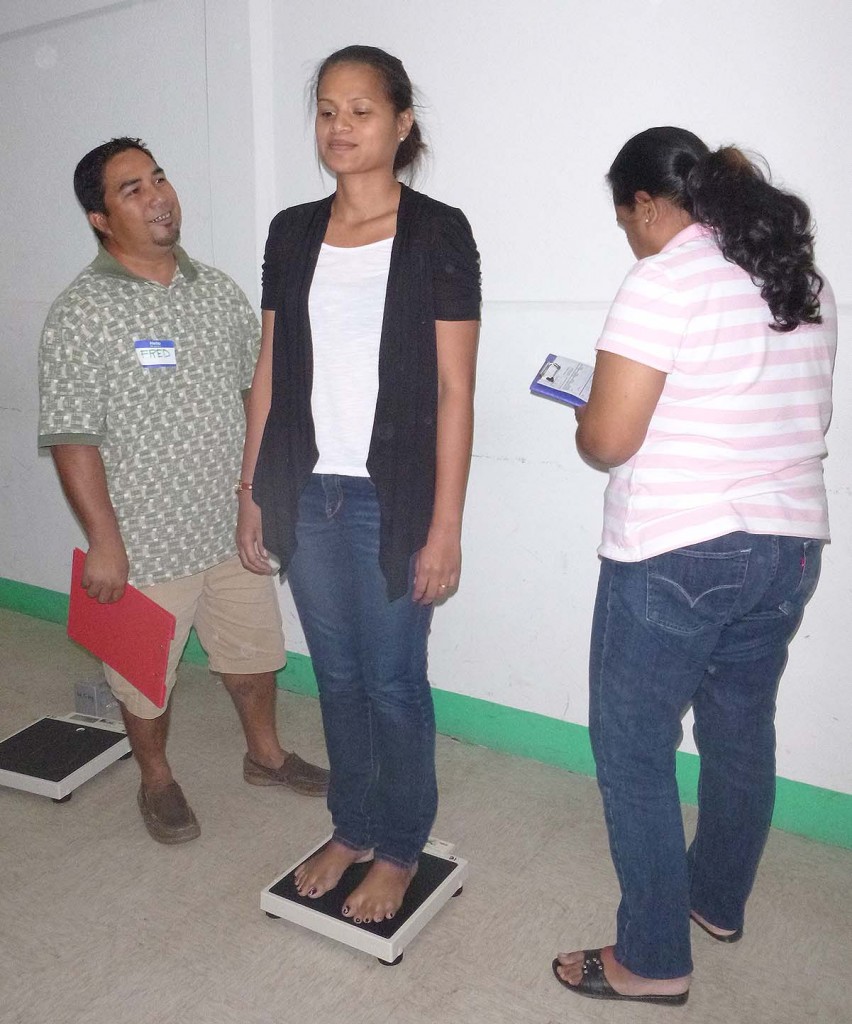
During the first two weeks of April, almost 200 children from various sites across Palau (Koror, Melkeok, Ngaarard, Ngeremlengui, Airai) were measured anthropometrically as well as assessed for Acanthosis Nigricans. The majority of Palauan parents returned to recovery days with completed Food and Activity Logs, as well as Ziplocs containing WLP’s. The Palau survey concluded on Good Friday, April 18, 2014.

CHL is extremely thankful to our local partner in Palau, the Palau Community Action Agency, the Palau local team members, as well as our local outreach education assistant, Ms. Shelley Remengesau.
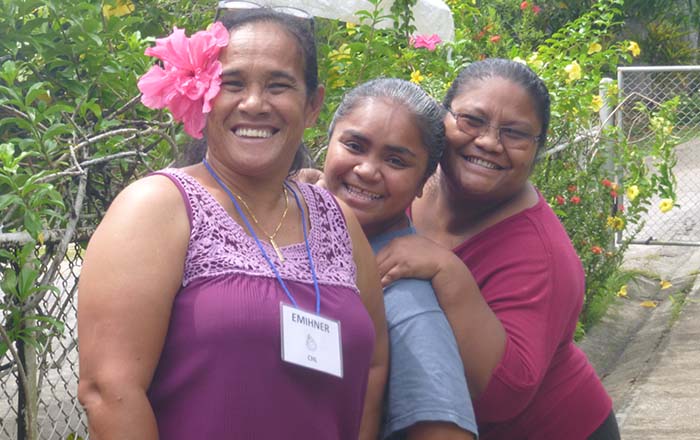
Plans are currently being put into place for two upcoming FAS prevalence surveys; Chuuk which is set to take place in the summer (2014), and Yap, scheduled for September 2014. In other FAS news, data entry for other forms has concluded in Pohnpei with Food and Activity Log data entry set to begin soon. The Republic of the Marshall Islands (RMI), whose prevalence survey concluded in February 2014, has completed form scanning and will soon begin other forms data entry. Community Assessment Tool (CAT) surveys have been completed in Pohnpei and RMI.
Guam
CHL Team Guam
The Guam CHL team has increased intervention efforts by continuing to work closely with schools, daycares, mayor’s offices, and its community partners. In the schools, the team has trained teachers in the “Starting Your Garden” curriculum, SPARK, and nutrition education. Community workshops have also taken place such as “Move and Grow” which teaches parents to make their kids more physically active and “Container Gardening” which teaches the importance of fruit and vegetable consumption. Earth Day – Ready, Set, Snorkel! This event was sponsored by the Tåsi group of the Guam Nature Alliance in collaboration with CHL, National Weather Service, M.U. Lujan and Talofofo Elementary School at Ipan beach in Talofofo. The event consisted of the kids being trained in water safety and the importance of physical activity. Participants were fitted with snorkeling gear and shown how to snorkel. This was the first time many of the kids had this opportunity. While the kids had fun in the water, parents and volunteers conducted a beach clean up to improve the physical environment.

Role Modeling Training The CHL Guam program has conducted its first official Role Modeling Training with 60 high school students at Simon Sanchez High School as part of their mini grant deliverables. The students were involved with the role modeling discussions, exercises, and the “SPARK” activities. Overall, the CHL associates and high school students did an outstanding job in making the Role Modeling Training a success in preparing the student to conduct their mini grant.
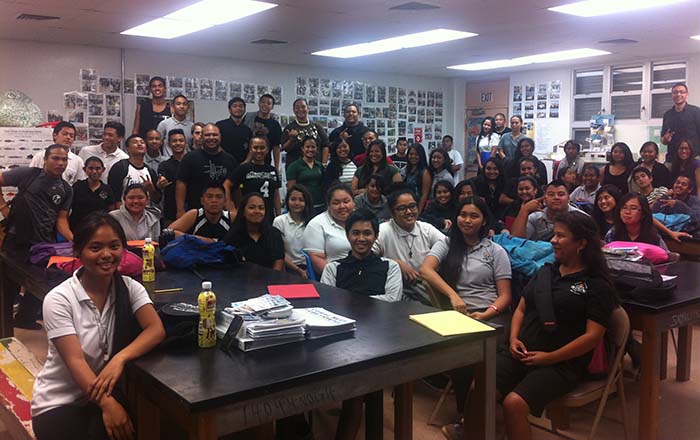
Mini Grants Our first mini grant activity took place on May 8, 2014, with Simon Sanchez High School students going to Upi Elementary school and Noah’s Ark day care to conduct a “Stay Active, Get Wet Activity Day”. The mini grant focused on increasing physical activity and water consumption, through providing water to drink as they go through the different exercise stations that promotes physical activity such as SPARK activities, as well as other activities that the high school students developed. Overall, the kids had so much fun and want to do it again!
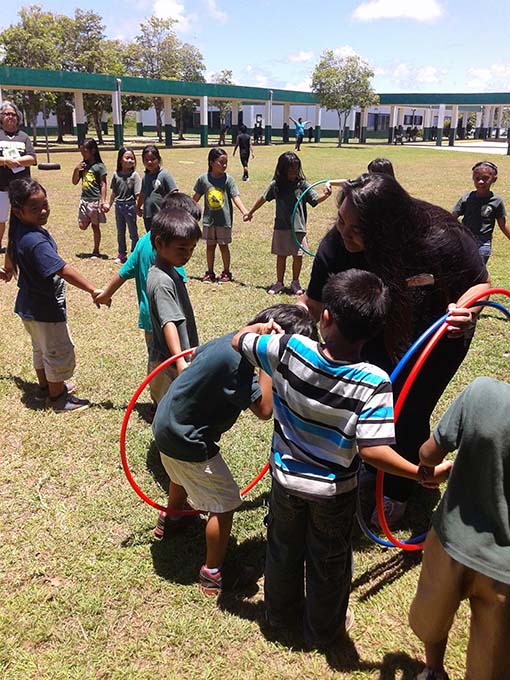
Hawai‘i
CHL Team Hawai‘i
CHL Hilo and Pana‘ewa Hawaiian Farmers Market (PHFM) Hilo is famous for its Farmers Markets. The downtown Hilo Farmers Market got so busy and crowded on Saturdays they added Wednesdays to accommodate the demand. The Kino‘ole Farmers Market started 5 years ago also responding to the demand and features only Big Island grown and prepared food and plants. But not many people know about the Pana‘ewa Hawaiian Farmers Market situated on Railroad Avenue across Home Depot. It was started by Milnor Lum in 2011 and is operated by the Keaukaha-Pana‘ewa Farmers Association giving Hawaiian families easier access to Hawaiian and locally grown foods.
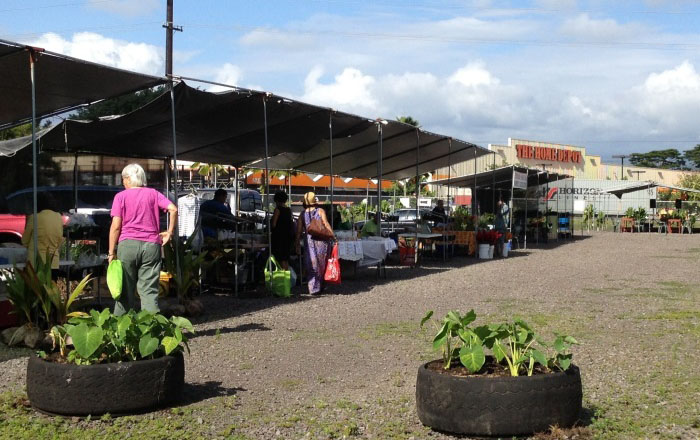
Lum’s vision for the Pana‘ewa Hawaiian Farmers Market (PHFM) was to make it a Native Planters’ Learning Center with a certified kitchen, experiential farming plots, and workshops for community members to learn how to become agricultural entrepreneurs. The idea was to provide Hawaiian families economic alternatives that are more consistent with Hawaiian lifeways. Lum turned over operations to Howard Pe‘a two years ago.

With Lum’s vision in mind, Pe‘a researched what it took to create a successful Farmers Market and devised a plan to attract more people. It started coming together last year when the Keaukaha-Pana‘ewa Farmers Association invited Dr. William Sakai to a meeting and he offered to teach hydroponic classes on Saturday afternoons at 3:30pm. Sakai is a professor of horticulture at the University of Hawai‘i Hilo (UHH) College of Agriculture, Forestry, and Natural Resource Management.
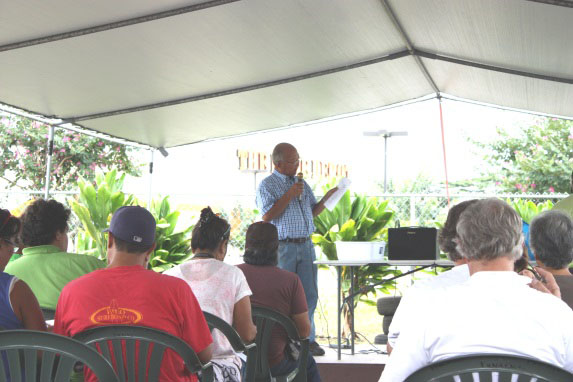
UH-Hilo receives funding from a USDA-NIFA Alaska Native and Native Hawaiian Serving-Institution Educational Grants Program that integrates culture, science and technology with agricultural education. The goal is to develop more Native Hawaiian agricultural leaders. UHH has been working with Big Island schools providing applied learning experiences where UHH students assist in growing several varieties of kalo and emphasizing the social, spiritual, and cultural importance of plants to historical and contemporary communities. Two years ago, with Debbie Cheever-Follett of Hilo Union School, they used Bernie Kratky’s 3-gallon-3 lettuce hydroponic bucket for K-6 students to grow their own lettuce to take home and share with family, friends and the community. Cheever-Follett developed a mentoring cascade, a program in line with CHL’s “train the trainers” concept where the students learn in order to become the teachers. In this case UHH students taught 6th graders who taught 5th graders, and so forth. In the first year, the 500+ students grew over 800 pounds of lettuce. This program was expanded to over 2500 K-12 students at several Big Island schools; 2000 more students will be added this year.
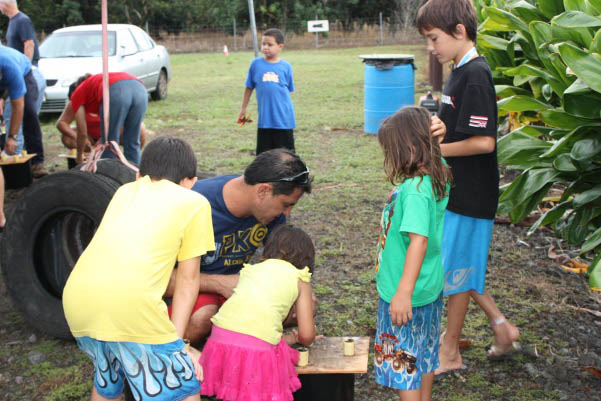
Pe‘a wanted to ensure Hawaiian families with school age children were participating in this exciting opportunity at the PHFM and began collaborating with Luana Busby-Neff, Hilo community organizer for the Children’s Healthy Living Program. Busby-Neff is promoting Ho‘okupu Kalo (the gift of kalo), a community-based culturally focused program concentrating on the cultivation of taro and supporting other community and educational organizations already engaged in supporting traditional Hawaiian sustainable gardens. Ho‘okupu Kalo specifically encourages growing kalo in backyard gardens targeting those families ready to grow food at their homes and be role models for their community.
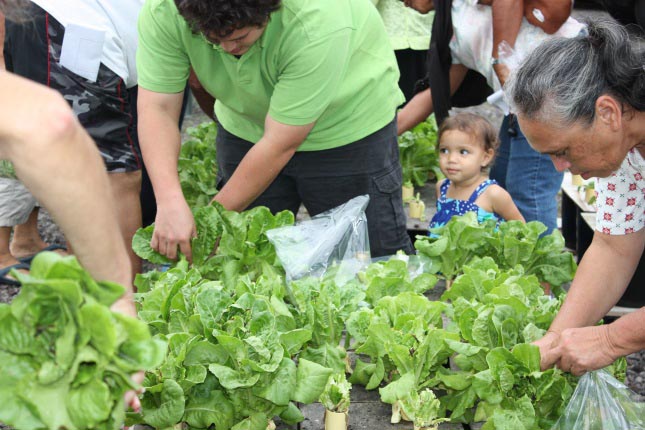
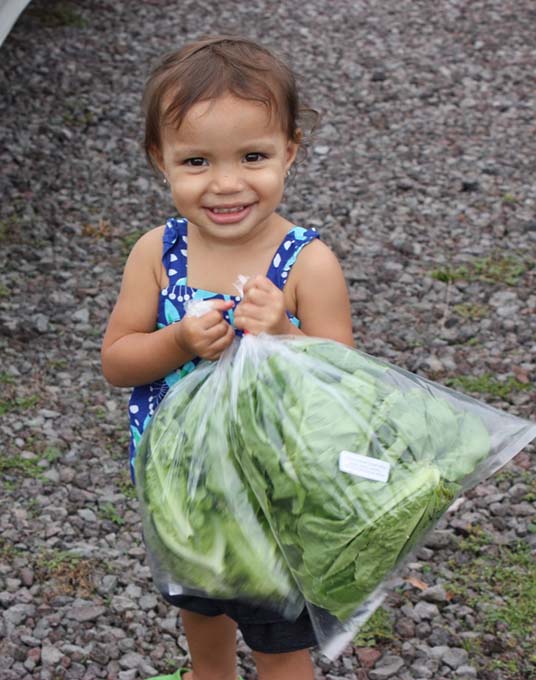 CHL families attended the Hydroponic workshops and 2 of the role model families, Pohai Kyota and Pikake Wilson-Kealoha, took it upon themselves to extend this learning into their backyards and/or their classrooms at Ka ‘Umeke Ka‘eo. This initiative deepened the resolve of Busby-Neff to connect Sakai with Kala Mossman at Ka ‘Umeke Ka‘eo to expand the hydroponic gardening to the after school program.
CHL families attended the Hydroponic workshops and 2 of the role model families, Pohai Kyota and Pikake Wilson-Kealoha, took it upon themselves to extend this learning into their backyards and/or their classrooms at Ka ‘Umeke Ka‘eo. This initiative deepened the resolve of Busby-Neff to connect Sakai with Kala Mossman at Ka ‘Umeke Ka‘eo to expand the hydroponic gardening to the after school program. 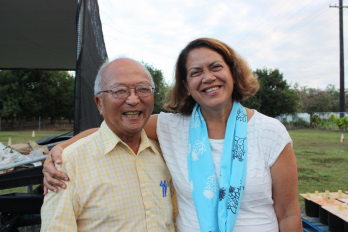 The newest project for the Pana‘ewa Hawaiian Farmers Market is the building of a 20’ x 30’ hydroponic greenhouse. The greenhouse is a hands-on learning center where community members who attend the hydroponic workshops get to harvest the produce when it is ready. The materials were provided by Sakai’s grant and some of the labor to build was provided by CHL role model families. The structure is 10 feet high at the center and 7 feet high on the sides to provide adequate drainage.
The newest project for the Pana‘ewa Hawaiian Farmers Market is the building of a 20’ x 30’ hydroponic greenhouse. The greenhouse is a hands-on learning center where community members who attend the hydroponic workshops get to harvest the produce when it is ready. The materials were provided by Sakai’s grant and some of the labor to build was provided by CHL role model families. The structure is 10 feet high at the center and 7 feet high on the sides to provide adequate drainage.
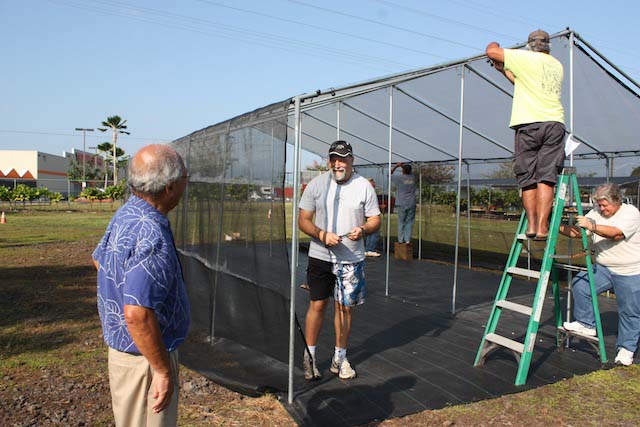
The roof is secured to the top bar to prevent it from lifting off the frame and acting as a kite or sail in heavy wind. It is made from plastic that lets 90% of visible light in, but keeps most of the UVB light out. Since thrips, whitefly and aphids see only UVB light the interior of the greenhouse appears dark. Dr. Sakai and the PHFM are planning to build another greenhouse for an aquaponics system.

The hydroponics, tire gardening, and greenhouse projects allow CHL families and other community members an opportunity to bring low-cost alternative gardening to their backyards and more healthy vegetables to their tables. The Children’s Healthy Living Program would like to recognize and thank Milnor Lum, Howard Pe‘a, Dr. William Sakai, and the Keaukaha-Pana‘ewa Farmers Association for their vision, efforts, and dedication for a healthier community in transforming the Pana‘ewa Hawaiian Farmers Market into a growing community center for health, education, and commerce.
